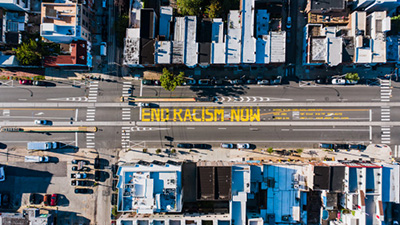
Alana Butler, Assistant Professor in the Faculty of Education at Queen’s, walks us through the importance of moving from awareness to action in relation to our anti-racism commitments.
The summer of 2020 not only brought us new social norms about dealing with a global pandemic, but worldwide protests against racist police brutality. The May 25 murder of George Floyd might have gone unmentioned were it not for multiple cell phone videos capturing his agonizing death in eight minutes and 46 seconds while under the knee of a White police officer in Minneapolis, Minnesota. Tragically, this type of event was not new. Black men and women have been the victims of state sanctioned murder for centuries. So have Indigenous and other racialized Americans over history. After the Civil Rights movement of the 1960s, Black Lives Matter has emerged as a recent social movement whose goal was to draw attention to the issue of racialized police brutality. BLM protests were held in over 2000 U.S. cities and in cities across four continents. What was different this time was that individual countries began to examine their own histories.
In Canada, there has been a long history of anti-Indigenous racism and anti-Black racism that has also manifested itself in acts of brutality and murder. The existence of colonialism, slavery from the 1600s to 1800s, the creation of the reserve system for Indigenous persons, residential schooling, the Sixties Scoop, racist immigration laws and practices, and police racial profiling have shaped our history. There is a long list of Black and Indigenous persons who have been murdered by the police with barely a mention in the news media. As an example, the Ontario Human Rights Commission has published a timeline of police involved deaths of Black Torontonians dating back to 1978. (See http://www.ohrc.on.ca/en/timeline-tps)
Anti-Black racism and anti-Indigenous racism have resulted in wide disparities in our economic, health care, education, criminal justice, and political institutions. As famous Canadian sociologist John Porter (1965) noted, Canada is a mosaic, but a vertical one, stratified by race with individuals with European heritage at the top and Black and Indigenous individuals at the bottom.
The Aftermath of BLM 2020
Thousands of organizations, from small non-profits to global multinational organizations have issued anti-racism statements over the past few months. Many had existing statements that were revamped and reissued. Whether it is good corporate governance or merely institutional emulation, all institutions were eager to position themselves as anti-racist. Universities and Colleges all issued statements acknowledging recent events and expressed their support for anti-racism. Have you ever seen more graphics with interlocked, multi-coloured hands?
Racialized and Indigenous members of some of those organizations publicly expressed skepticism on social media. Haven’t we seen those statements before? As scholar Sara Ahmed (2012) has written, drafting diversity and anti-racism statements is more about drafting the actual document than making real change. Ahmed (2012) likens fighting for institutional change as coming up against a brick wall.
Moving beyond mere words requires a radical commitment to change. It demands accountability for those who commit acts of racism. A radical commitment to antiracist change involves a deep examination of internal practices related to hiring, promotion, retention. It involves examining the leadership hierarchy to ensure that it is not ‘cappuccino’ by being White at the top and dark brown at the bottom. For education, it requires radical changes to our curricula. It is not about eliminating Eurocentric knowledge but expanding our conceptualization of what we consider to be canonical knowledge to incorporate Indigenous, African, and other epistemologies. Statements are easy to draft. Real change is difficult. As the old expression goes, talk is cheap!
Sources:
Ahmed, S. (2012). On Being Included: Racism and Diversity in Institutional Life. Durham, NC: Duke University Press.
Ontario Human Rights Commission (2017). Timeline of racial discrimination and racial profiling
of Black persons by the Toronto Police Service, and OHRC initiatives related to the
Toronto Police. http://www.ohrc.on.ca/en/timeline-tps
Porter, J. (1965). The Vertical Mosaic. Toronto: University of Toronto Press